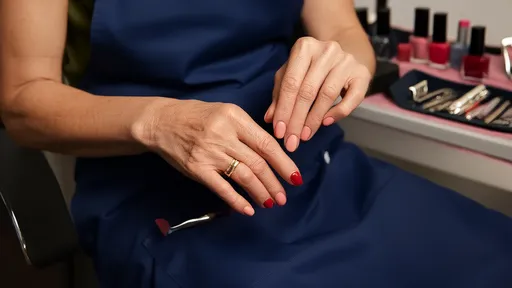The growing popularity of plant-based hair dyes has been celebrated as a victory for both personal expression and environmental consciousness. Marketed as "natural" and "chemical-free," these products promise vibrant colors without the harsh side effects of traditional synthetic dyes. Yet beneath this greenwashed facade lies a troubling reality: plant-derived hair colorants carry significant allergy risks that consumers rarely anticipate.
Unlike conventional dyes that list potent ingredients like PPD (p-phenylenediamine), botanical alternatives often hide behind vague terms like "herbal blend" or "plant extract." This lack of transparency becomes dangerous when considering that natural doesn't equate to hypoallergenic. Henna—the poster child of natural hair coloring—frequently causes severe reactions when adulterated with metallic salts or combined with other plant compounds. The very substances that create rich, long-lasting hues also trigger immune responses ranging from itchy scalps to anaphylactic shock.
Dermatologists report a surge in cases where patients assume plant-based equals safer, only to develop contact dermatitis after application. The misconception stems from clever marketing that positions synthetic dyes as the sole villains while glossing over nature's own chemical arsenal. Plants evolve defensive compounds like tannins and quinones that can provoke reactions as severe as their lab-created counterparts. Worse still, many botanical dye users skip patch tests, believing the products inherently gentle.
The regulatory landscape compounds these risks. While agencies like the FDA strictly monitor synthetic hair color ingredients, plant-based variants slip through loopholes in cosmetic regulations. Without standardized labeling requirements, a product labeled "100% natural" might contain undisclosed fillers or sensitizing agents. This regulatory gray area leaves consumers navigating a minefield where even reputable brands may source botanicals with varying potency or contamination levels.
Allergists note that plant dye reactions often manifest differently than synthetic dye allergies. Instead of immediate responses, sensitization builds over repeated use—what begins as slight tingling progresses to blistering rashes. The delayed onset creates false confidence, leading users to attribute symptoms to other causes. Compounding the issue, many botanical dye advocates in online communities dismiss reactions as "detoxing" or "healing crises," discouraging medical consultation until symptoms become severe.
Climate change introduces another layer of complexity. As growing conditions shift, plants produce altered chemical profiles—a phenomenon already observed in poison ivy becoming more potent. This means a henna plant harvested during drought might contain higher concentrations of irritating lawsone molecules than the same species grown under ideal conditions. Without rigorous batch testing (rare in the natural cosmetics industry), consumers essentially play botanical roulette with each application.
The solution isn't abandoning plant dyes but approaching them with informed caution. Dermatologists recommend treating natural hair colorants with the same respect as synthetic formulas: always perform patch tests, research individual plant compounds, and recognize that "herbal" doesn't guarantee safety. Regulatory bodies must close labeling loopholes, requiring full disclosure of all ingredients—including potential adulterants—in plant-based cosmetics. Until then, the pursuit of chemical-free hair color remains fraught with risks that the wellness industry continues to downplay.
Ultimately, the plant-based hair dye movement reflects a larger cultural tension between our desire for purity and the complex reality of nature itself. Plants aren't passive ingredients but biologically active systems evolved to interact with—and sometimes defend against—other organisms. This truth gets lost in the rush to embrace all things natural, leaving consumers vulnerable to the very harms they sought to avoid. True beauty innovation lies not in choosing between synthetic and botanical, but in developing transparent, rigorously tested products that prioritize safety alongside sustainability.

By /Aug 13, 2025

By /Aug 13, 2025

By /Aug 13, 2025

By /Aug 13, 2025

By /Aug 13, 2025

By /Aug 13, 2025

By /Aug 13, 2025

By /Aug 13, 2025

By /Aug 13, 2025

By /Aug 13, 2025

By /Aug 13, 2025

By /Aug 13, 2025

By /Aug 13, 2025

By /Aug 13, 2025

By /Aug 13, 2025

By /Aug 13, 2025

By /Aug 13, 2025

By /Aug 13, 2025

By /Aug 13, 2025

By /Aug 13, 2025